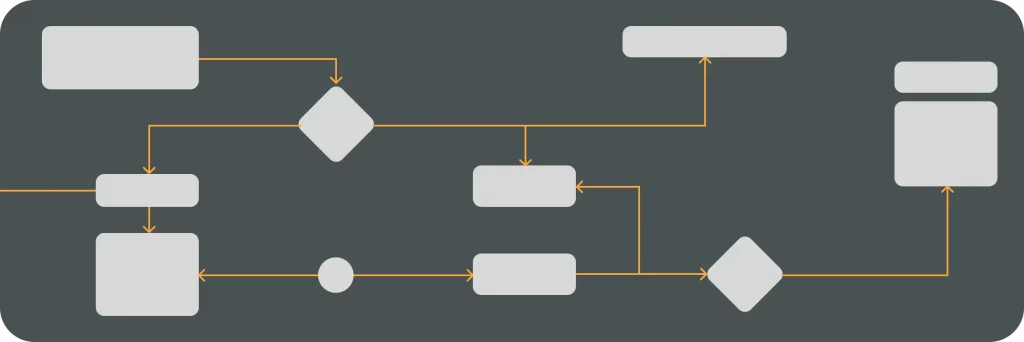Virtualization is an essential aspect of DevOps, enabling organizations to optimize their resources and improve operational efficiency. In this article, we will delve into the concept of virtualization, explore its importance in the DevOps landscape, discuss the different types of virtualization, and highlight the numerous benefits it offers. Additionally, we will provide insights into the implementation of virtualization in DevOps, including selecting the right virtualization technology, deployment strategies, and monitoring and managing virtual environments. Let’s dive in!
Understanding Virtualization in DevOps
The Concept of Virtualization
Virtualization involves creating a simulated version of various IT resources, such as servers, operating systems, networks, and storage devices. It allows multiple virtual instances to run on a single physical machine, thereby maximizing resource utilization. By abstracting the underlying hardware, virtualization provides an isolated environment for different applications to run independently.
Virtualization not only offers the ability to consolidate physical infrastructure but also provides a wide range of benefits. For example, it enables organizations to achieve cost savings by reducing the number of physical servers required. By running multiple virtual machines on a single server, companies can optimize their hardware utilization and reduce power consumption.
Furthermore, virtualization enhances the flexibility and scalability of IT infrastructure. With virtualization, businesses can easily add or remove virtual machines as needed, allowing for dynamic allocation of resources. This flexibility enables organizations to respond quickly to changing demands and scale their infrastructure accordingly.
Importance of Virtualization in DevOps
Virtualization plays a critical role in enabling efficient DevOps practices. It allows developers, testers, and operations teams to work in isolated environments, reducing conflicts and streamlining collaboration. This separation of concerns enhances productivity while ensuring stability and reliability.
Additionally, virtualization facilitates the creation of consistent and reproducible deployment environments. By encapsulating the entire application stack and its dependencies, virtualization enables the rapid provisioning of environments, ensuring consistency from development through to production.
Moreover, virtualization enables organizations to implement effective disaster recovery strategies. By utilizing virtual machine snapshots and backups, businesses can easily restore their systems to a previous state in the event of a failure. This capability ensures minimal downtime and helps protect critical business operations.
In conclusion, virtualization is a fundamental concept in DevOps that offers numerous benefits. From cost savings and increased flexibility to improved collaboration and disaster recovery capabilities, virtualization empowers organizations to achieve greater efficiency and agility in their IT operations.
Types of Virtualization in DevOps
Virtualization is a key component of modern DevOps practices, enabling organizations to optimize resource utilization, enhance scalability, and simplify management. In addition to operating system virtualization, network virtualization, and storage virtualization, there are other types of virtualization that play a crucial role in DevOps environments.
Application Virtualization
Application virtualization is the process of encapsulating an application and its dependencies into a self-contained package, known as a virtual application. This package can be deployed and executed on any compatible host operating system without the need for installation or modification. Application virtualization offers several benefits in DevOps, including simplified application deployment, improved compatibility, and enhanced security. It allows DevOps teams to quickly provision and scale applications, reducing time-to-market and increasing agility.
Desktop Virtualization
Desktop virtualization, also known as virtual desktop infrastructure (VDI), enables the delivery of desktop environments to end-users as virtual machines. With desktop virtualization, users can access their desktops and applications from any device, anywhere, without being tied to a specific physical machine. This flexibility enhances productivity and enables remote work, a crucial aspect of modern DevOps practices. Desktop virtualization also simplifies desktop management, reduces hardware costs, and improves security by centralizing data and applications in the data center.
Database Virtualization
Database virtualization involves abstracting the physical database infrastructure, such as servers and storage, to create a virtualized layer that separates the logical database from the underlying hardware. This virtualization allows for efficient management and provisioning of databases, enabling DevOps teams to rapidly deploy and scale database instances. Database virtualization also enhances data availability and disaster recovery capabilities, as it enables seamless replication and migration of databases across different physical locations. By decoupling databases from hardware, database virtualization simplifies database administration and optimizes resource utilization.
These additional forms of virtualization, along with operating system virtualization, network virtualization, and storage virtualization, provide DevOps teams with a comprehensive set of tools to optimize their infrastructure, streamline operations, and accelerate software delivery. By leveraging the power of virtualization, organizations can achieve greater efficiency, flexibility, and scalability in their DevOps practices.
Benefits of Virtualization in DevOps
Enhanced Efficiency and Flexibility
Virtualization enables better resource utilization, allowing organizations to do more with less. By consolidating multiple virtual instances on a single physical machine, DevOps teams can optimize hardware resources, reduce costs, and improve energy efficiency. Additionally, virtualization provides the flexibility to rapidly scale resources up or down based on workload demands, ensuring optimal performance.
For example, imagine a scenario where a DevOps team needs to test a new software release on multiple operating systems. Without virtualization, they would require separate physical machines for each operating system, resulting in increased costs and resource inefficiency. However, by leveraging virtualization, the team can create virtual instances of each operating system on a single physical machine, saving both time and resources.
Cost Reduction and Savings
Virtualization helps reduce infrastructure costs by maximizing the utilization of hardware resources. With virtualization, organizations can avoid the need for dedicated servers for each application or service. This consolidation not only saves on hardware expenses but also reduces power consumption and cooling requirements. Moreover, virtualization enables the sharing of licenses, reducing software costs and eliminating license-related complexities in the DevOps ecosystem.
Consider a situation where a DevOps team is working on a project that requires multiple software licenses. Without virtualization, each virtual instance would require a separate license, leading to significant expenses. However, by leveraging virtualization, the team can share licenses across multiple virtual instances, resulting in cost savings and simplified license management.
Improved Disaster Recovery
Virtualization enhances disaster recovery capabilities by providing snapshots, backups, and replication features. These features enable the quick restoration of virtual instances in case of hardware failures or catastrophes. By encapsulating applications and their dependencies, virtualization streamlines the recovery process, minimizing downtime and ensuring business continuity.
For instance, imagine a scenario where a critical application fails due to a hardware malfunction. Without virtualization, the recovery process would involve reinstalling the application on a new physical machine, which could take hours or even days. However, with virtualization, the team can simply restore a snapshot of the virtual instance, allowing the application to be up and running within minutes.
Implementing Virtualization in DevOps
Choosing the Right Virtualization Technology
When implementing virtualization in DevOps, selecting the right technology is crucial. Different virtualization technologies cater to specific use cases and requirements. Organizations must evaluate factors such as performance, scalability, security, compatibility, and ease of management before making a decision. Whether it’s containerization, network virtualization, or storage virtualization, the choice should align with the organization’s overall DevOps strategy.
Containerization, for example, is a popular virtualization technology that allows for the creation and deployment of lightweight, isolated containers. These containers encapsulate applications and their dependencies, providing a consistent and reproducible environment across different systems. With containerization, DevOps teams can easily package and distribute applications, ensuring seamless deployment and scalability.
On the other hand, network virtualization enables the creation of virtual networks that are decoupled from the underlying physical infrastructure. This technology allows for the abstraction and virtualization of network resources, providing flexibility and agility in network configuration. DevOps teams can leverage network virtualization to create complex network topologies, implement security policies, and optimize network performance.
Virtualization Deployment Strategies
Once the appropriate virtualization technology is chosen, DevOps teams need to define the deployment strategy. This involves determining the number and placement of virtual instances, resource allocation, networking configurations, and security considerations. DevOps practitioners should leverage automation tools to streamline the deployment process and ensure consistency across environments.
Automated deployment tools, such as Ansible and Puppet, enable DevOps teams to define infrastructure as code, allowing for the automated provisioning and configuration of virtual instances. These tools provide a declarative approach to infrastructure management, making it easier to version control and reproduce environments. By automating the deployment process, DevOps teams can reduce human error, increase deployment speed, and achieve greater consistency in their virtual environments.
Monitoring and Managing Virtual Environments
Proper monitoring and management of virtual environments are vital in a DevOps context. DevOps teams should employ monitoring tools that provide insights into resource utilization, performance metrics, and application behavior. These tools assist in identifying potential bottlenecks, capacity planning, and troubleshooting, ensuring optimal performance and availability.
One popular monitoring tool in the DevOps landscape is Prometheus. Prometheus allows for the collection, storage, and visualization of time-series data, providing real-time insights into the health and performance of virtual environments. With Prometheus, DevOps teams can set up custom alerts, create dashboards, and perform advanced analytics to gain a deep understanding of their virtualized infrastructure.
Additionally, effective management practices, such as regular patching and updates, help maintain the security and stability of virtual environments. DevOps teams should establish a robust patch management process to ensure that virtual instances are up to date with the latest security patches and bug fixes. By staying proactive in managing virtual environments, organizations can mitigate security risks and ensure the smooth operation of their DevOps workflows.
In conclusion, virtualization is a fundamental concept in the world of DevOps. It offers numerous advantages, including enhanced efficiency, cost reduction, improved disaster recovery, and increased flexibility. By understanding the concept of virtualization, exploring its different types, and implementing the right virtualization technology, organizations can unlock the full potential of DevOps. With proper monitoring and management practices in place, virtualization empowers DevOps teams to streamline collaboration, accelerate deployment cycles, and deliver high-quality applications. Embracing virtualization sets the stage for successful DevOps transformations, paving the way for continuous innovation and business growth.




